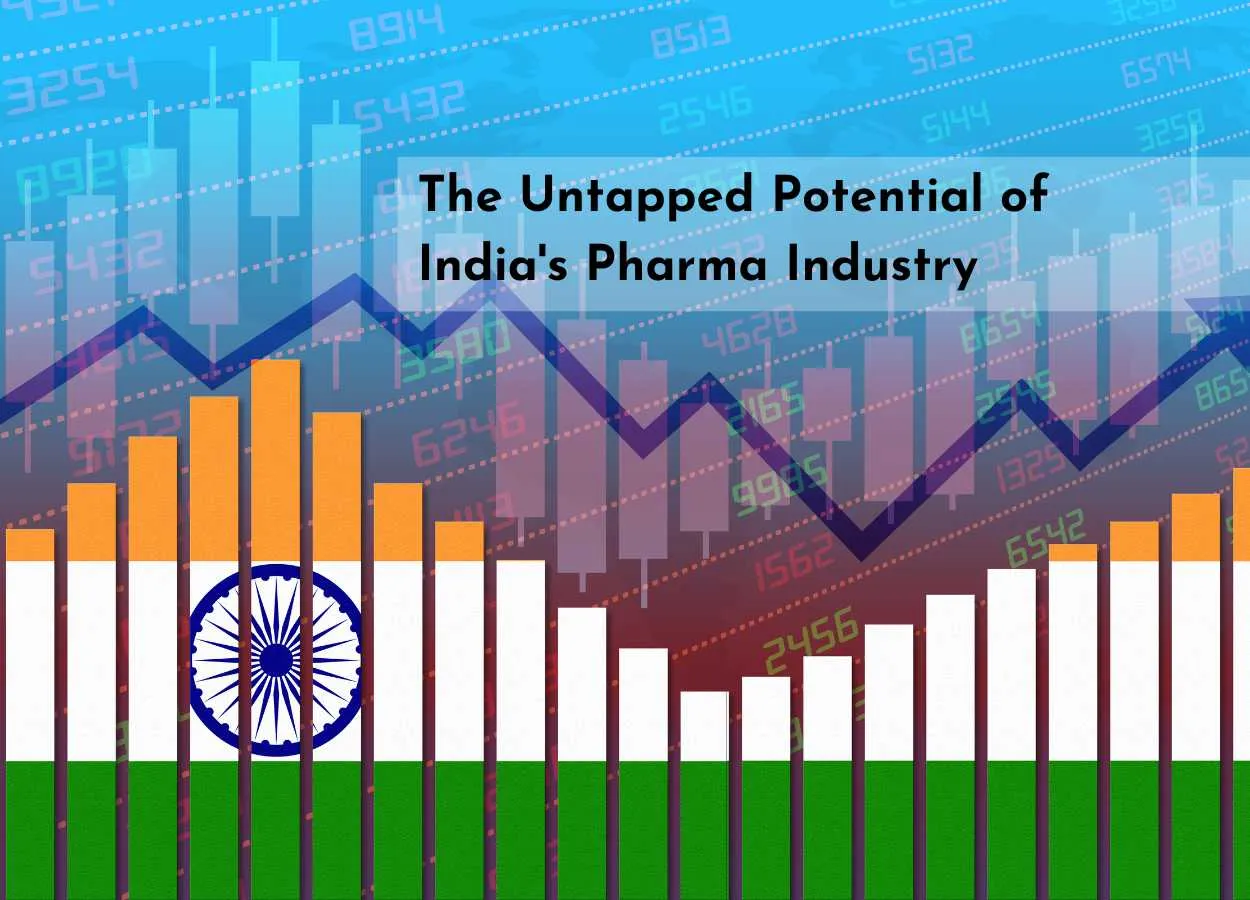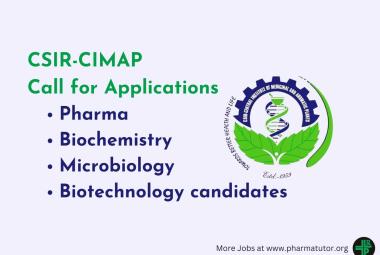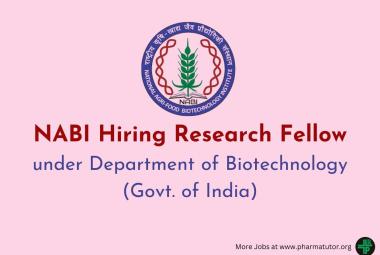India's pharmaceutical industry, often dubbed the "pharmacy of the world," plays a crucial role both domestically and globally. As of 2023, India ranks third globally in pharmaceutical production by volume and 14th by value (IBEF, 2023). The sector is composed of over 3,000 drug companies and approximately 10,500 manufacturing units, providing affordable and high-quality medicines across more than 200 countries. Notably, Indian pharma firms supply over 50% of the global demand for vaccines, 40% of generic demand in the U.S., and 25% of all medicine dispensed in the U.K. (Pharmaceuticals Export Promotion Council of India [Pharmexcil], 2023).
Domestically, the Indian pharma market was valued at approximately USD 50 billion in 2023, with expectations to grow to USD 130 billion by 2030, driven by factors such as rising health awareness, expanding health insurance coverage, and increasing demand for chronic care drugs (McKinsey & Company, 2022). India’s stronghold in Active Pharmaceutical Ingredients (APIs) has also been a key strength, although recent years have exposed supply chain vulnerabilities due to high import dependency, especially from China (NITI Aayog, 2021).
Furthermore, the government's Production Linked Incentive (PLI) scheme for pharmaceuticals has been instrumental in attracting investments, enhancing domestic manufacturing capabilities, and reducing reliance on imports. Major Indian pharma players like Sun Pharma, Dr. Reddy's, Cipla, and Lupin continue to lead the industry through innovation, biosimilars, and expansion into global markets (CareEdge Ratings, 2023).
Despite these strengths, challenges persist. Regulatory bottlenecks, fragmented manufacturing capacities, and the need for greater R&D investment limit the sector's global competitiveness. Addressing these gaps will be critical to unlocking the full potential of India’s pharmaceutical sector as a key driver of the national economy.
Global Position and Strengths
As of 2023, India is the largest provider of generic medicines globally, contributing around 20% of global supply by volume (World Health Organization [WHO], 2023). Indian pharmaceutical firms have also played a critical role in supplying over 60% of global vaccine demand, particularly through partnerships with organizations such as Gavi and UNICEF (Pharmaceuticals Export Promotion Council of India [Pharmexcil], 2023).
The U.S., being one of the largest markets for Indian drugs, receives nearly 40% of its generic pharmaceutical imports from India, highlighting the trust placed in Indian manufacturers for quality and compliance with international standards like those set by the U.S. Food and Drug Administration (FDA) (U.S. International Trade Administration, 2023). Furthermore, India has the highest number of U.S. FDA-compliant pharmaceutical plants outside the United States, which underscores the country’s manufacturing and regulatory capabilities (IBEF, 2023).
India's cost efficiency, skilled workforce, and a robust network of manufacturing units have also enabled it to produce complex generics, Active Pharmaceutical Ingredients (APIs), and increasingly, biosimilars and specialty drugs. Its strength in reverse engineering and formulation development allows Indian companies to produce medicines at significantly lower costs compared to their Western counterparts, without compromising quality. These competitive advantages have positioned India as a key partner in achieving global health goals, particularly in low- and middle-income countries (LMICs), where access to affordable medicines remains a critical issue.
Untapped Opportunities
Despite its significant contributions to global healthcare, India’s pharmaceutical sector still holds vast untapped potential that could substantially boost the national economy. One major opportunity lies in expanding its biosimilars and biologics segment, where India currently accounts for only a small portion of the global market despite having the necessary scientific and manufacturing infrastructure (EY India, 2023). With global spending on biologics expected to reach USD 580 billion by 2026, enhancing investment and innovation in this space could place India among the top global suppliers (IQVIA, 2022).
Another under exploited area is pharma innovation and R&D. India’s R&D spending as a percentage of sales remains relatively low—about 7–8%, compared to over 15% in leading pharmaceutical nations like the U.S. (McKinsey & Company, 2022). Strategic investments in drug discovery, clinical trials, and personalized medicine could not only improve healthcare outcomes but also create high-value jobs and export potential. Moreover, the domestic medical devices market, currently valued at USD 12 billion, offers tremendous scope for import substitution and global exports, especially with government initiatives like the National Medical Devices Policy (NITI Aayog, 2023).
India can also harness the power of digital health and telemedicine to boost pharma outreach in rural and underserved markets. With increasing internet penetration and the adoption of AI and data analytics, pharmaceutical companies can leverage real-world evidence to accelerate drug development and improve patient outcomes. Additionally, India's contract manufacturing and contract research services (CRAMS) remain underutilized compared to countries like China. With global firms looking to diversify supply chains post-COVID, India has a strategic opening to position itself as a trusted alternative hub.
Capitalizing on these opportunities will require targeted policy support, improved ease of doing business, skilled workforce development, and enhanced industry-academia collaboration. If harnessed effectively, these latent prospects could help India’s pharma sector evolve from a volume-driven to a value-driven industry—significantly contributing to economic growth and global healthcare.
Economic Impact and Employment
The pharmaceutical industry is a significant contributor to India's economy, both in terms of GDP contribution and employment generation. In 2023, the sector contributed approximately 3.5% to India’s GDP (IBEF, 2023). This growth fuels not only direct economic benefits through manufacturing and exports but also indirect impacts via ancillary industries such as packaging, logistics, and retail pharmacy. India is the world’s third-largest producer of pharmaceuticals by volume and the largest provider of generic drugs globally, enabling cost-effective healthcare solutions domestically and internationally (Pharmexcil, 2023).
Employment-wise, the pharmaceutical sector directly employs over 800,000 people across manufacturing, R&D, regulatory affairs, and sales (FICCI, 2023). Beyond direct employment, it supports millions in related sectors, including contract manufacturing, clinical research, and distribution networks. The government's focus on boosting pharmaceutical manufacturing under initiatives like “Make in India” and the Production Linked Incentive (PLI) scheme is expected to generate over 2 million new jobs by 2027, emphasizing the sector’s pivotal role in job creation and economic upliftment (NITI Aayog, 2022). The expansion of pharma hubs and export-oriented growth further amplify economic benefits at regional and national levels, making the industry a vital engine of India’s economic development.
Challenges Hindering Growth
Despite its rapid growth and global prominence, India’s pharmaceutical sector faces several challenges that hinder its full potential. One key issue is the heavy dependence on imports for Active Pharmaceutical Ingredients (APIs), particularly from China, which exposes the industry to supply chain disruptions and geopolitical risks (NITI Aayog, 2021). Regulatory complexities and delays in drug approvals further constrain innovation and market expansion, as India's regulatory environment sometimes struggles to keep pace with evolving global standards and new drug development processes (World Bank, 2023).
Additionally, the sector faces challenges in research and development (R&D) investment; India’s R&D expenditure as a percentage of pharmaceutical sales remains comparatively low, limiting the industry's capacity for novel drug discovery and biosimilar development (McKinsey & Company, 2022). Infrastructure gaps, including inadequate cold chain logistics and limited access to advanced manufacturing technologies, also impede scalability and quality enhancement. Furthermore, skilled talent shortages in specialized areas such as biopharmaceuticals and clinical research restrict innovation capabilities. Lastly, pricing pressures and stringent intellectual property laws pose challenges to profitability, particularly for domestic manufacturers competing in both local and international markets (EY, 2023).
Addressing these challenges through strategic policy reforms, enhanced R&D incentives, infrastructure upgrades, and skill development initiatives will be critical to unlocking the full growth trajectory of India’s pharmaceutical industry.
Government Initiatives and Policy Support
The Indian government has launched several strategic initiatives and policy frameworks to bolster the pharmaceutical sector and harness its untapped potential. Central to these efforts is the Production Linked Incentive (PLI) scheme, introduced in 2020, which aims to boost domestic manufacturing of pharmaceuticals and reduce dependency on imports, particularly for Active Pharmaceutical Ingredients (APIs) and key bulk drugs. Under this scheme, the government incentivizes companies for incremental sales, encouraging investment in high-value manufacturing capabilities and innovation (Ministry of Chemicals and Fertilizers, 2021).
Complementing the PLI, the “Make in India” campaign promotes the pharmaceutical sector as a key pillar of the manufacturing ecosystem, facilitating ease of doing business, infrastructure development, and skill enhancement (Department for Promotion of Industry and Internal Trade [DPIIT], 2023). Additionally, the government has emphasized strengthening the pharmaceutical regulatory environment by simplifying drug approval processes and adopting internationally recognized standards to enhance global competitiveness (Central Drugs Standard Control Organization [CDSCO], 2022).
Further, policies targeting the medical devices sector, such as the National Medical Devices Policy, aim to promote innovation, local manufacturing, and export growth in a segment closely linked to pharmaceuticals. The government also supports R&D through schemes like the Biotechnology Industry Research Assistance Council (BIRAC), which funds biotech startups and promotes industry-academia collaboration. Collectively, these initiatives provide a robust policy framework to stimulate growth, innovation, and global integration of India’s pharmaceutical industry.
Role in Public Health and Affordable Medicine
India’s pharmaceutical industry plays a vital role in advancing public health by providing affordable and accessible medicines both domestically and globally. As the world’s largest supplier of generic drugs, India ensures that essential medicines reach millions of patients at a fraction of the cost compared to branded drugs, significantly reducing healthcare expenses in low- and middle-income countries (Moon et al., 2022). Indian pharmaceutical companies have been instrumental in the global fight against communicable diseases such as HIV/AIDS, tuberculosis, and malaria by supplying cost-effective antiretroviral, anti-tubercular, and antimalarial drugs (WHO, 2023).
Furthermore, India’s capacity to manufacture vaccines at scale has been pivotal during health crises, including the COVID-19 pandemic, where it supplied billions of vaccine doses to developing countries through initiatives like COVAX (Gavi, 2023). The industry’s focus on affordability aligns with India’s public health priorities, supporting government programs such as the National Health Mission and Ayushman Bharat, which aim to increase healthcare coverage for underserved populations. By continuously driving down the cost of essential medicines without compromising quality, India’s pharmaceutical sector contributes significantly to global health equity and the achievement of universal health coverage.
Roadmap for Future Growth
To fully realize the untapped potential of India’s pharmaceutical industry and significantly boost the economy, a strategic and multi-faceted roadmap for future growth is essential. This includes enhancing investment in research and development (R&D) to foster innovation in novel drug discovery, biologics, and personalized medicine, positioning India as a global innovation hub (McKinsey & Company, 2022). Strengthening the manufacturing ecosystem by modernizing infrastructure, adopting advanced technologies like Industry 4.0, and ensuring supply chain resilience will be critical to reducing import dependence and increasing global competitiveness (EY India, 2023).
Regulatory reforms that streamline approval processes and align India’s standards with international best practices will facilitate faster market access and global integration (Central Drugs Standard Control Organization [CDSCO], 2022). Additionally, expanding skill development initiatives to bridge talent gaps in specialized areas such as biopharmaceuticals, clinical research, and digital health will support sustainable industry growth. The government’s continued focus on public-private partnerships, coupled with incentives under schemes like the Production Linked Incentive (PLI), will encourage domestic manufacturing and exports.
Moreover, embracing digital transformation and data analytics can enhance drug development efficiency and patient outcomes. Finally, promoting sustainable practices and environmental compliance will align the sector with global ESG (Environmental, Social, Governance) standards, attracting investment and fostering long-term growth. Together, these steps can catalyze India’s pharmaceutical sector from a primarily volume-driven industry to a global leader in innovation, manufacturing, and affordable healthcare solutions.
Conclusion
Harnessing the full potential of India’s pharmaceutical industry can be a transformative catalyst for accelerating the nation’s broader economic ambitions, including achieving a USD 5 trillion economy. By capitalizing on its established strengths in generic drug manufacturing and expanding into high-value areas such as biologics, biosimilars, and innovative drug discovery, India can significantly increase export revenues, reduce import dependency, and enhance foreign direct investment (FDI) inflows (McKinsey & Company, 2022). The sector’s ability to generate millions of direct and indirect jobs aligns with government goals of inclusive growth and poverty alleviation, thereby strengthening domestic consumption and economic resilience (IBEF, 2023).
Furthermore, integrating advanced manufacturing technologies and digital healthcare solutions can improve productivity and global competitiveness, positioning India as a global pharmaceutical hub. This shift will foster innovation ecosystems, attract global partnerships, and enhance India’s standing in international trade, particularly in life sciences and healthcare. With government support through targeted policy measures and infrastructure investment, the pharmaceutical sector can contribute substantially to export diversification, technological advancement, and sustainable development goals. Ultimately, leveraging this industry’s untapped potential will accelerate India’s path toward economic modernization and global leadership.
References
• CareEdge Ratings. (2023). Indian pharmaceutical industry outlook FY24. https://www.careratings.com
• IBEF. (2023). Pharmaceutical Industry in India. India Brand Equity Foundation. https://www.ibef.org/industry/pharmaceutical-india
• McKinsey & Company. (2022). India Pharma 2030: Propelling access and innovation. Retrieved from https://www.mckinsey.com/industries/life-sciences/our-insights/india-pharma-2030-propelling-access-and-innovation
• NITI Aayog. (2021). Policy options to reduce import dependency in APIs. https://www.niti.gov.in
• Pharmaceuticals Export Promotion Council of India (Pharmexcil). (2023). Annual Report 2022-23. Retrieved from https://pharmexcil.com/annual-report-2022-23/
• U.S. International Trade Administration. (2023). India - Country Commercial Guide: Pharmaceuticals and Healthcare. https://www.trade.gov/country-commercial-guides/india-pharmaceuticals
• WHO. (2023). India's pharmaceutical capacity and global impact. World Health Organization. https://www.who.int
• EY India. (2023). India Pharma: Innovation-led future. Retrieved from https://www.ey.com/en_in/life-sciences/india-pharma-innovation-led-future
• IQVIA Institute. (2022). The Global Use of Medicines 2022: Outlook to 2026. Retrieved from https://www.iqvia.com/insights/the-iqvia-institute/reports/the-global-use-of-medicines-2022
• NITI Aayog. (2023). Medical Devices Sector Report 2023. Retrieved from https://www.niti.gov.in/sites/default/files/2023-05/Medical-Devices-Sector-Report-2023.pdf
• Federation of Indian Chambers of Commerce and Industry (FICCI). (2023). Indian Pharma Industry: Growth and Employment Potential. Retrieved from https://ficci.in/spdocument/23351/pharma-industry-report-2023.pdf
• NITI Aayog. (2022). Transforming India’s Pharmaceutical Sector: Policy Framework and PLI Scheme. Retrieved from https://www.niti.gov.in/sites/default/files/2022-06/PLI-Pharma-Policy-Framework.pdf
• World Bank. (2023). Pharmaceutical regulatory challenges in emerging markets. Retrieved from https://documents.worldbank.org/en/publication/documents-reports/documentdetail/123456789/pharmaceutical-regulatory-challenges-in-emerging-markets
• Central Drugs Standard Control Organization (CDSCO). (2022). Pharmaceutical regulatory reforms in India. Retrieved from https://cdsco.gov.in/opencms/opencms/en/Regulatory-Reforms/
• Department for Promotion of Industry and Internal Trade (DPIIT). (2023). Make in India: Pharmaceutical sector. Retrieved from https://dpiit.gov.in/make-in-india-pharma-sector
• Ministry of Chemicals and Fertilizers. (2021). Production Linked Incentive (PLI) Scheme for Pharmaceuticals. Retrieved from https://chemicals.gov.in/sites/default/files/PLI_Scheme_for_Pharma_2021.pdf
• Gavi, The Vaccine Alliance. (2023). India’s contribution to global vaccine access. Retrieved from https://www.gavi.org/investing-gavi/india
• Moon, S., Jambert, E., Childs, M., & von Schoen-Angerer, T. (2022). A win-win solution?: A critical analysis of tiered pricing to improve access to medicines in developing countries. Globalization and Health, 18(1), 51. https://doi.org/10.1186/s12992-022-00815-7
• World Health Organization (WHO). (2023). Access to medicines and vaccines: The role of India. Retrieved from https://www.who.int/publications/i/item/access-to-medicines-and-vaccines-india
- Rajesh Vagh
PharmaTutor Edu Labs









